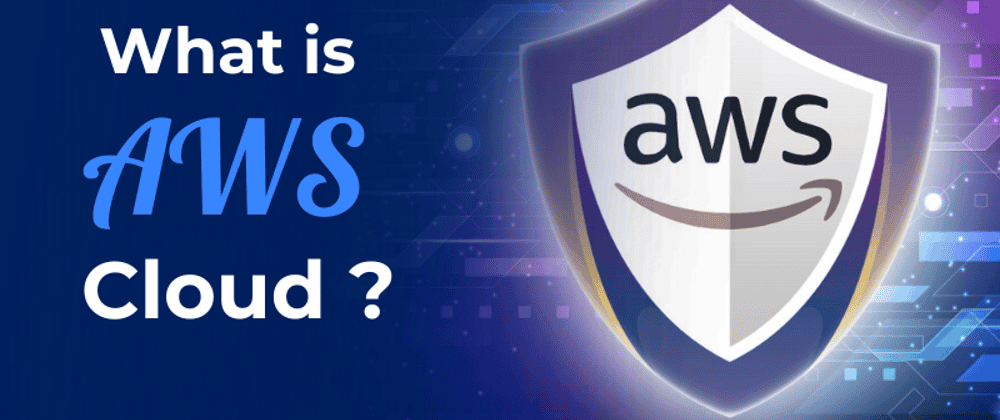Build & Run PostgreSQL from Source: A Developer's Guide
Building and Running PostgreSQL from Source Code
This comprehensive guide walks you through the process of building and running a PostgreSQL database server from source code on a Debian-based Linux system. While installing pre-built packages is generally recommended for production environments, building from source offers valuable insights for developers and allows for customized configurations.
Preface
- This guide is specifically designed for Debian-based Linux distributions.
- The instructions are primarily intended for PostgreSQL development purposes. For standard deployments, consider installing pre-compiled packages from your distribution's repository for optimal stability and ease of use.
Step 1: Install Git and Clone the PostgreSQL Repository
First, ensure Git is installed. If not, use the following command:
sudo apt-get install gitNext, clone the official PostgreSQL repository. You can choose any directory; here, we'll use ~/Workplace:
mkdir -p ~/Workplace
cd Workplace/
git clone git://git.postgresql.org/git/postgresql.gitStep 2: Install Required Build Dependencies
Before building PostgreSQL, install necessary dependencies:
sudo apt-get install -y build-essential git gdb lcov bison flex libkrb5-dev libssl-dev libldap-dev libpam0g-dev python3-dev tcl-dev libperl-dev gettext libxml2-dev libxslt1-dev libreadline-dev libedit-dev uuid-dev libossp-uuid-dev libipc-run-perl perlThe configure script will check for these packages, prompting for installation if any are missing. Note that the specific package names and versions may vary slightly depending on your distribution.
Step 3: Building and Installing PostgreSQL
Create a separate directory for build files, set the PG_DIR_PREFIX environment variable to specify the installation location, and enable debugging. This will aid in troubleshooting during development. Avoid building within the source directory for better organization.
cd postgresql
mkdir -p ${HOME}/Workplace/build/pgsql/master/
export PG_DIR_PREFIX=${HOME}/Workplace/build/pgsql/master
./configure --prefix=${PG_DIR_PREFIX} --enable-depend --enable-debug --enable-cassert --enable-tap-tests CFLAGS=-O0
make
make installThe CFLAGS=-O0 flag disables optimization, improving debugging capabilities. You can remove it for a production build to optimize performance.
Step 4: Initialize and Start the PostgreSQL Server
Initialize the database cluster and start the PostgreSQL server:
mkdir -p ${PG_DIR_PREFIX}/data
${PG_DIR_PREFIX}/bin/initdb -D ${PG_DIR_PREFIX}/data
${PG_DIR_PREFIX}/bin/pg_ctl -D ${PG_DIR_PREFIX}/data -l logfile startThe -l logfile option redirects server logs to a file named logfile in the data directory. This is extremely helpful for debugging.
Step 5: Verify PostgreSQL is Running
Check the process list to confirm PostgreSQL is running:
ps -ef | grep postgresYou should see several postgres processes indicating the server is operational.
Step 6: Connect to PostgreSQL using psql
Before using psql, set the shared library path:
export LD_LIBRARY_PATH=${LD_LIBRARY_PATH}:${PG_DIR_PREFIX}/libConnect to the database using the psql command:
${PG_DIR_PREFIX}/bin/psql -d postgresTest the connection by querying the version:
postgres=# select version();Step 7: Disconnect from PostgreSQL
Type \q to disconnect from the psql client.
postgres=# \qStep 8: Stop PostgreSQL
To gracefully stop the PostgreSQL server, use:
${PG_DIR_PREFIX}/bin/pg_ctl stop -D ${PG_DIR_PREFIX}/data -m smartThe -m smart option ensures a clean shutdown, minimizing data corruption risks.
This guide provides a foundation for building and running PostgreSQL from source. In future articles, we will explore advanced topics such as debugging and performance optimization.
Related Articles
Software Development
Unveiling the Haiku License: A Fair Code Revolution
Dive into the innovative Haiku License, a game-changer in open-source licensing that balances open access with fair compensation for developers. Learn about its features, challenges, and potential to reshape the software development landscape. Explore now!
Read MoreSoftware Development
Leetcode - 1. Two Sum
Master LeetCode's Two Sum problem! Learn two efficient JavaScript solutions: the optimal hash map approach and a practical two-pointer technique. Improve your coding skills today!
Read MoreBusiness, Software Development
The Future of Digital Credentials in 2025: Trends, Challenges, and Opportunities
Digital credentials are transforming industries in 2025! Learn about blockchain's role, industry adoption trends, privacy enhancements, and the challenges and opportunities shaping this exciting field. Discover how AI and emerging technologies are revolutionizing identity verification and workforce management. Explore the future of digital credentials today!
Read MoreSoftware Development
Unlocking the Secrets of AWS Pricing: A Comprehensive Guide
Master AWS pricing with this comprehensive guide! Learn about various pricing models, key cost factors, and practical tips for optimizing your cloud spending. Unlock significant savings and efficiently manage your AWS infrastructure.
Read MoreSoftware Development
Exploring the GNU Verbatim Copying License
Dive into the GNU Verbatim Copying License (GVCL): Understand its strengths, weaknesses, and impact on open-source collaboration. Explore its unique approach to code integrity and its relevance in today's software development landscape. Learn more!
Read MoreSoftware Development
Unveiling the FSF Unlimited License: A Fairer Future for Open Source?
Explore the FSF Unlimited License: a groundbreaking open-source license designed to balance free software distribution with fair developer compensation. Learn about its origins, strengths, limitations, and real-world impact. Discover how it addresses the challenges of open-source sustainability and innovation.
Read MoreSoftware Development
Conquer JavaScript in 2025: A Comprehensive Learning Roadmap
Master JavaScript in 2025! This comprehensive roadmap guides you through fundamental concepts, modern frameworks like React, and essential tools. Level up your skills and build amazing web applications – start learning today!
Read MoreBusiness, Software Development
Building a Successful Online Gambling Website: A Comprehensive Guide
Learn how to build a successful online gambling website. This comprehensive guide covers key considerations, technical steps, essential tools, and best practices for creating a secure and engaging platform. Start building your online gambling empire today!
Read MoreAI, Software Development
Generate Images with Google's Gemini API: A Node.js Application
Learn how to build an AI-powered image generator using Google's Gemini API and Node.js. This comprehensive guide covers setup, API integration, and best practices for creating a robust image generation service. Start building today!
Read MoreSoftware Development
Discover Ocak.co: Your Premier Online Forum
Explore Ocak.co, a vibrant online forum connecting people through shared interests. Engage in discussions, share ideas, and find answers. Join the conversation today!
Read MoreSoftware Development
Mastering URL Functions in Presto/Athena
Unlock the power of Presto/Athena's URL functions! Learn how to extract hostnames, parameters, paths, and more from URLs for efficient data analysis. Master these essential functions for web data processing today!
Read MoreSoftware Development
Introducing URL Opener: Open Multiple URLs Simultaneously
Tired of opening multiple URLs one by one? URL Opener lets you open dozens of links simultaneously with one click. Boost your productivity for SEO, web development, research, and more! Try it now!
Read More
Software Development, Business
Unlocking the Power of AWS: A Deep Dive into Amazon Web Services
Dive deep into Amazon Web Services (AWS)! This comprehensive guide explores key features, benefits, and use cases, empowering businesses of all sizes to leverage cloud computing effectively. Learn about scalability, cost-effectiveness, and global infrastructure. Start your AWS journey today!
Read MoreSoftware Development
Understanding DNS in Kubernetes with CoreDNS
Master CoreDNS in Kubernetes: This guide unravels the complexities of CoreDNS, Kubernetes's default DNS server, covering configuration, troubleshooting, and optimization for seamless cluster performance. Learn best practices and avoid common pitfalls!
Read MoreSoftware Development
EUPL 1.1: A Comprehensive Guide to Fair Open Source Licensing
Dive into the EUPL 1.1 open-source license: understand its strengths, challenges, and real-world applications for fair code. Learn how it balances freedom and developer protection. Explore now!
Read MoreSoftware Development
Erlang Public License 1.1: Open Source Protection Deep Dive
Dive deep into the Erlang Public License 1.1 (EPL 1.1), a crucial open-source license balancing collaboration and contributor protection. Learn about its strengths, challenges, and implications for developers and legal teams.
Read MoreSoftware Development
Unlocking Kerala's IT Job Market: Your Path to Data Science Success
Launch your data science career in Kerala's booming IT sector! Learn the in-demand skills to land high-paying jobs. Discover top data science courses & career paths. Enroll today!
Read More
Software Development
Automation in Software Testing: A Productivity Booster
Supercharge your software testing with automation! Learn how to boost productivity, efficiency, and accuracy using automation tools and best practices. Discover real-world examples and get started today!
Read MoreSoftware Development
Mastering Anagram Grouping in JavaScript
Master efficient anagram grouping in JavaScript! Learn two proven methods: sorting and character counting. Optimize your code for speed and explore key JavaScript concepts like charCodeAt(). Improve your algorithms today!
Read More
Software Development
Mastering Kubernetes Deployments: Rolling Updates and Scaling
Master Kubernetes Deployments for seamless updates & scaling. Learn rolling updates, autoscaling, and best practices for high availability and efficient resource use. Improve your application management today!
Read More